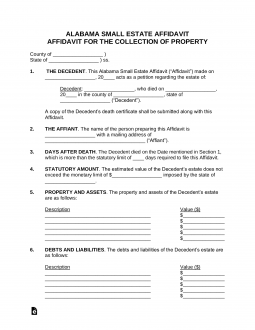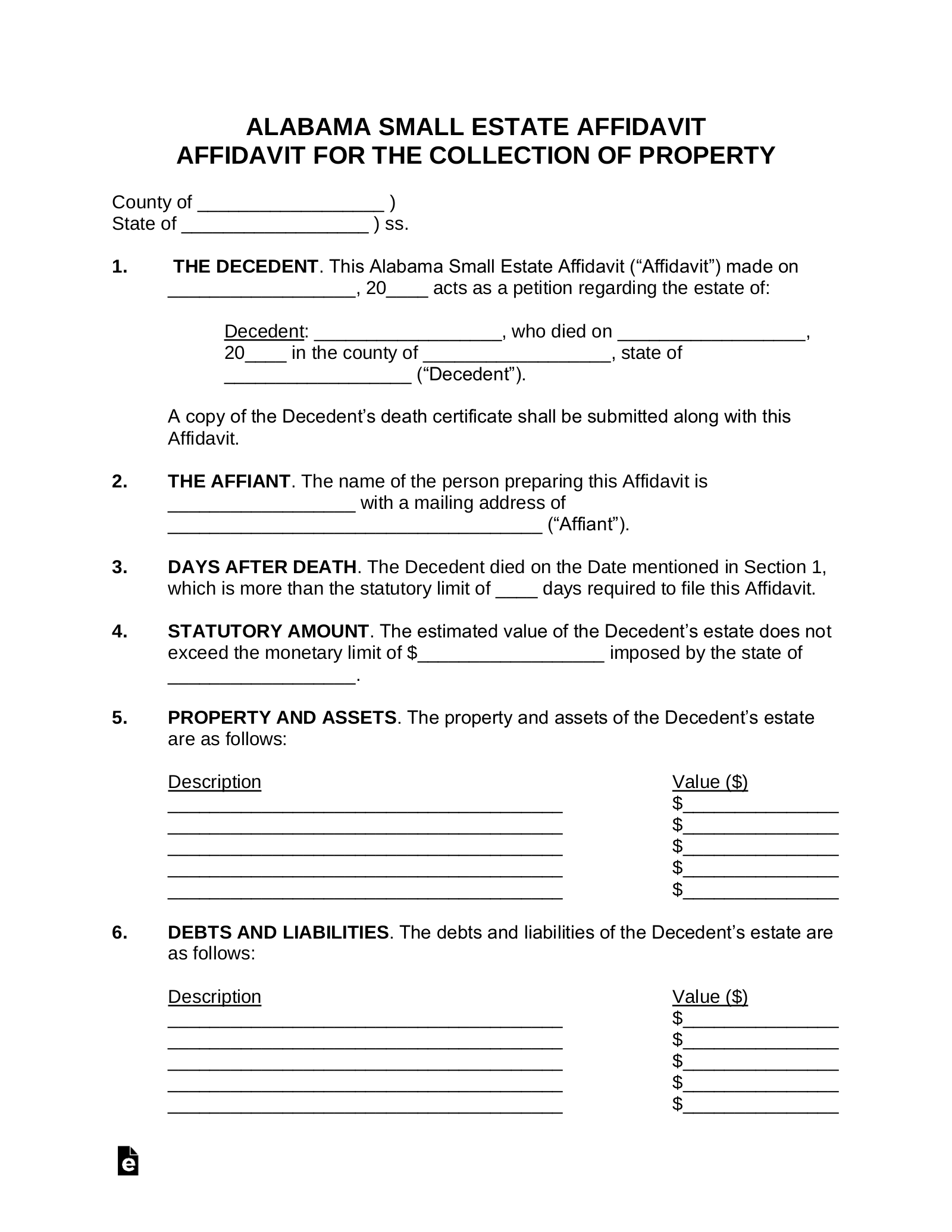Updated April 29, 2024
An Alabama small estate affidavit allows heirs of an estate to distribute its assets and bypass the probate process. It is commonly called a “petition for summary distribution,” and is only available for estates with a total value smaller than the state-imposed minimum ($34,611), which is linked to inflation and changes each year. To file the document, all heirs — defined as the decedent’s spouse and surviving family — must be identified and notified. One heir, usually known as the “affiant,” must file the form with the Judge of Probate in the county where the decedent died.
Laws
- Days After Death – Thirty (30) days.[1]
- Maximum Amount – Under a state law passed in 2009, only estates worth less than $25,000 qualified at the time. However, that amount is linked to the Consumer Price Index and changes yearly. For the period from March 1, 2024 through February 28, 2025, it is $36,030.[2]
- Publishing – A notice of the filing for a petition for summary distribution must be published in a newspaper of general circulation in the county in which the decedent lived, and no distribution may occur until at least 30 days have passed from the time of publication. If there is no newspaper of general circulation in the decedent’s county, then the notice must be posted at the county courthouse for one week.[3]
- Signing Requirements – No direct statutes, though the form is typically notarized or proved by two (2) witnesses.
- Statutes – Petition for Summary Distribution (§ 43-2-692)
How to File (4 steps)
- Step 1: Verify eligibility
- Step 2: Contact all heirs
- Step 3: Settle obligations
- Step 4: Fill out, sign and file
Step 1: – Verify that the estate is eligible
This will include identifying and valuing all of the decedent’s property to make sure it falls below the state maximum. The affiant should confirm with the Local Probate Court that there is no competing application that has already been filed or an application for a personal representative. There also may not be a pending application for someone to act as an executor, if the decedent had a will, or administrator if the decedent did not.
Step 2 – Contact all the Heirs
Because all possible heirs must be identified in the affidavit, the affiant must make an effort to contact family members and the decedent’s spouse to let them know of the petition filing. Along with informing them, the affiant should get the updated contact information to include with the petition.
Step 3 – Settle any remaining obligations
Under Alabama law, if the decedent had any outstanding debts or obligations, these must be settled before a petition for summary distribution may be filed. This includes paying for funeral expenses or at least making arrangements to pay for them.
Step 4 – Fill out, sign, and file the affidavit form
Petitions for summary distribution should be filed with the probate court for the county where the decedent lived. A listing is available with this Court Locator. Alabama law requires that the submission also include proof of death, such as a death certificate.


